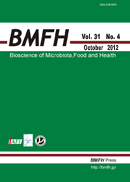We previously observed that gut colonization by
Candida albicans promoted serum antibody response to orally administered ovalbumin in mice. We therefore postulated that
C. albicans affects oral tolerance induction. The present study tested this idea. BALB/c mice were intragastrically administered with either
C. albicans (1 × 10
7) or vehicle, and the colonization was confirmed by weekly fecal cultures. Mice were further divided into two subgroups and intragastrically administered with either ovalbumin (20 mg) or vehicle for five consecutive days. Thereafter, all mice were intraperitoneally immunized with ovalbumin in alum. In mice without
C. albicans inoculation, ovalbumin feeding prior to immunization significantly suppressed the increase in ovalbumin-specific IgE, IgG1 and IgG2a in sera, suggesting oral tolerance induction. In
C. albicans-inoculated mice, however, the antibody levels were the same between ovalbumin- and vehicle-fed mice. In contrast, ovalbumin feeding significantly suppressed cellular immune responses, as evidenced by reduced proliferation of splenocytes restimulated by ovalbumin
ex vivo, in both
C. albicans-inoculated and uninoculated mice.
Ex vivo supplementation with neither heat-killed
C. albicans nor the culture supernatant of
C. albicans enhanced the production of ovalbumin-specific IgG1 in splenocytes restimulated by the antigen. These results suggest that gut colonization by
C. albicans inhibits the induction of humoral immune tolerance to dietary antigen in mice, whereas
C. albicans may not directly promote antibody production. We therefore propose that
C. albicans gut colonization could be a risk factor for triggering food allergy in susceptible individuals.
View full abstract
